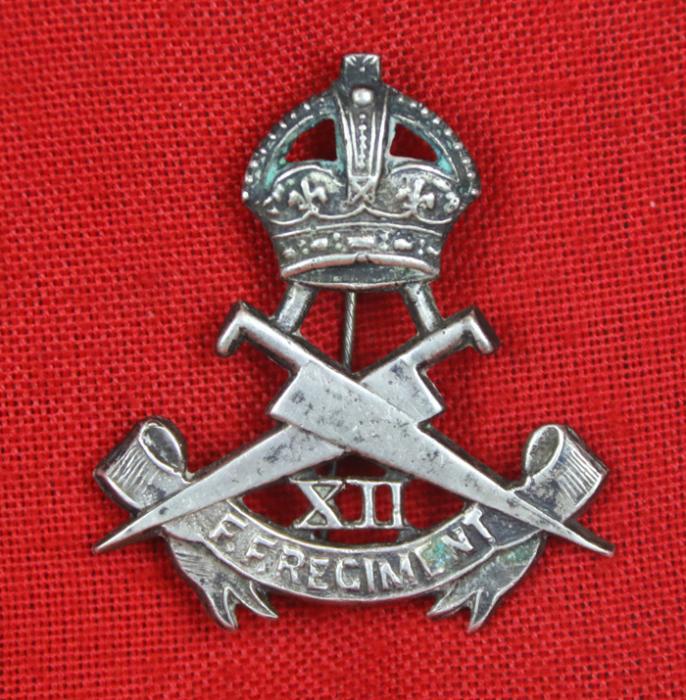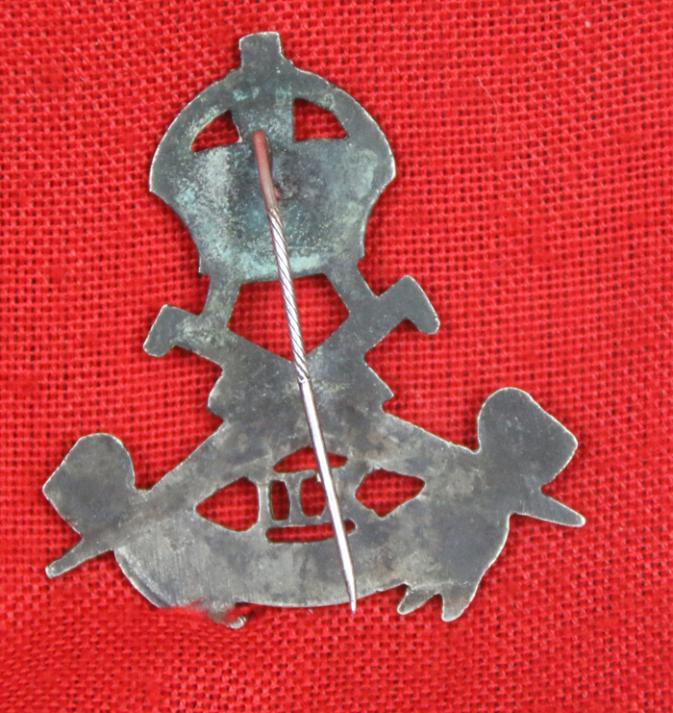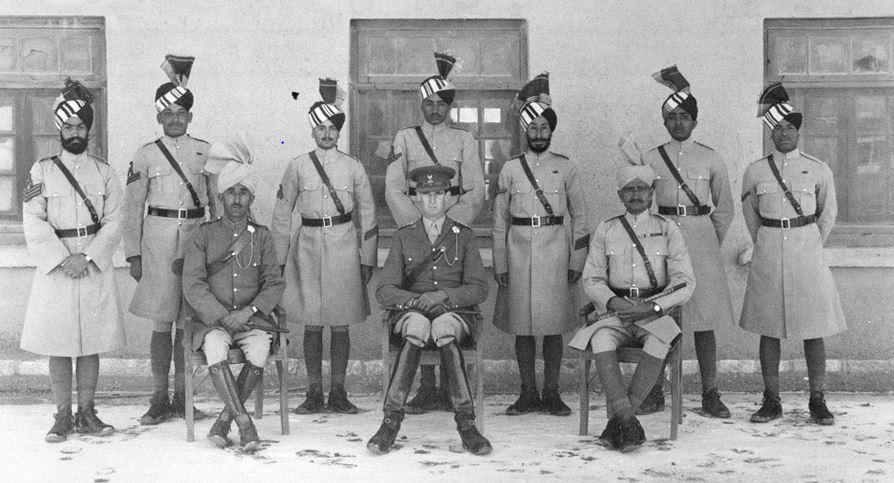A Most Rare British Empire Raj Period XII Frontier Force Regt. Silver Cap or Turban Badge
Cast low grade silver, for NCO or officer, with needle pin fixing, which often indicates for wear on a puggaree or a turban. The King Emperor crown of King George, and a crossed pair of choora knives or Afghan Khyber knives. So far we can find no other example, and it is the first we have seen. The more commonly known 12th Frontier Force Regiment in the Indian Army was a Light Infantry regiment, with a bugle badge, so we don't know if this was their first and earliest badge, that was potentially replaced around 1922, or, another XIIth Frontier Force regiment altogether. Either way it is a most fine and intriguing authentic British Empire Raj period piece, but, surrounded by an element of mystery to us at least. The armies of the East India Company were recruited primarily from Muslims in the Bengal Presidency, which consisted of Bengal, Bihar and Uttar Pradesh, and high caste Hindus recruited primarily from the rural plains of Oudh. Many of these troops took part in the Indian Mutiny, with the aim of reinstating the Mughal Emperor Bahadur Shah II at Delhi.
The meaning of the term "Indian Army" has changed over time, initially as an informal collective term for the armies of the three presidencies–the Bengal Army, Madras Army and Bombay Army–between 1858 and 1894. In 1805, the Indian Army began its formal existence and was the "army of the government of India", including British and Indian (sepoy) units; this arrangement lasted until 1902.
Then in 1903, Lord Kitchener became the Commander-in-Chief of the Indian Army, his tenure continued until 1909. He instituted large-scale reforms, the greatest of which was the merger of the three armies of the Presidencies into a unified force. He formed higher level formations, eight army divisions, and brigaded Indian and British units. Following Kitchener's reforms, terminology used for military forces in India was altered, with the Indian Army referring to "the force recruited locally and permanently based in India, together with its expatriate British officers." Whereas the British Army in India referred to the British Army units posted to India for a tour of duty, and which would then be posted to other parts of the Empire or back to the UK. Comparatively, the term 'Army of India', meant the combined forces of both the Indian Army and the British Army in India. Militaria from the British Empire Indian Raj period over the past 30 years has become, extremely collectable, highly prized and most valuable. In many cases the rarer the better
Code: 23703
295.00 GBP




